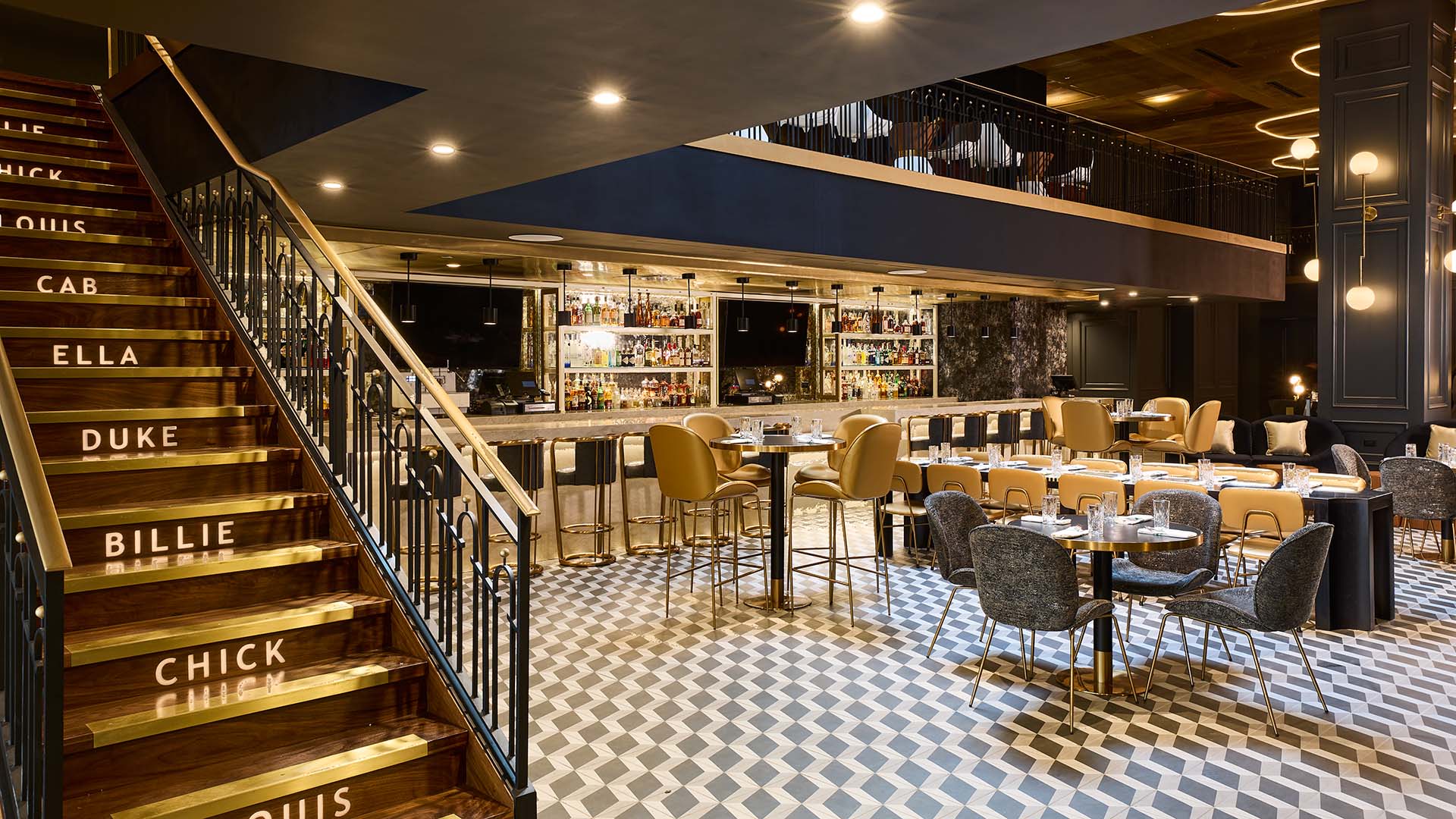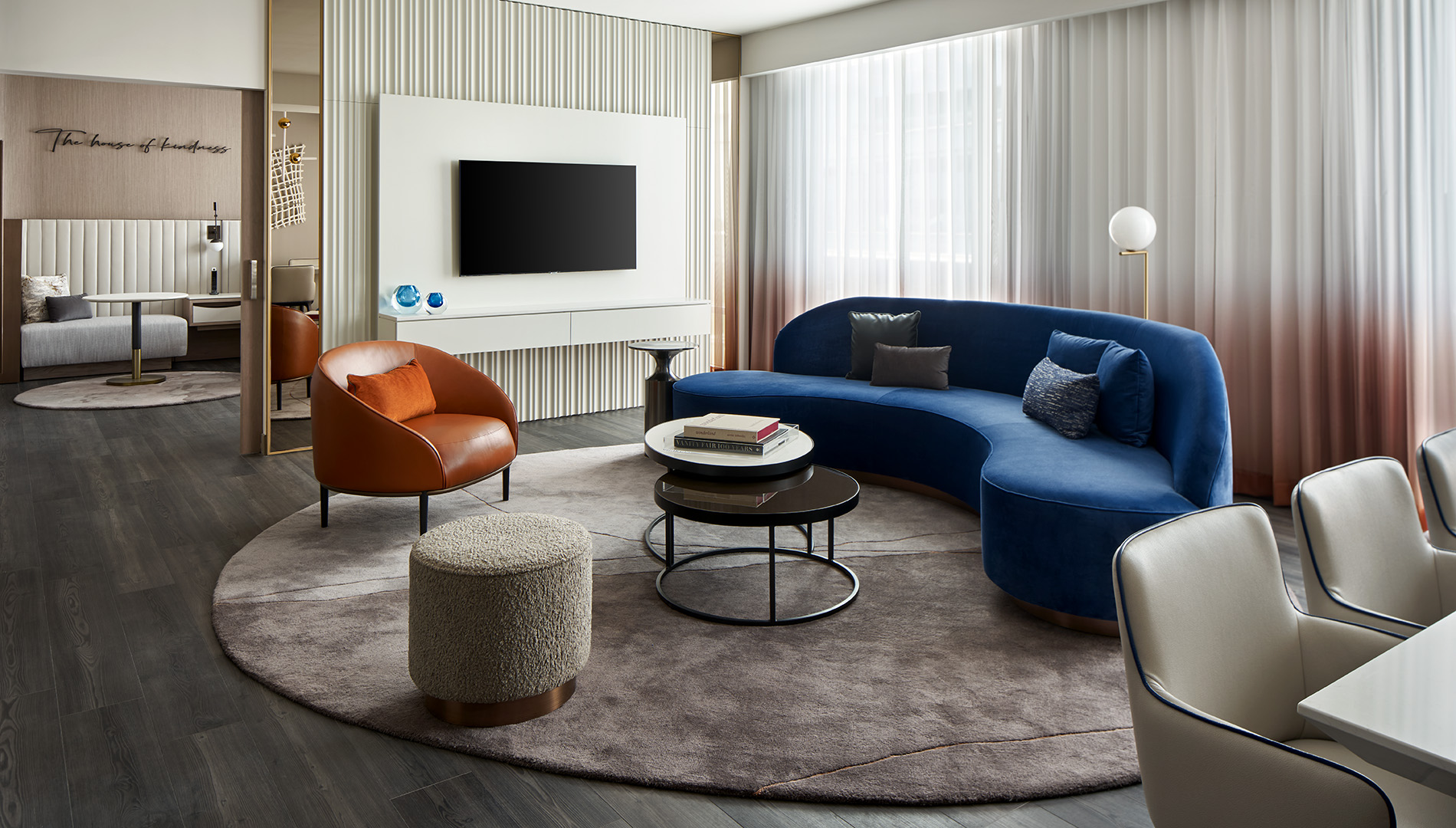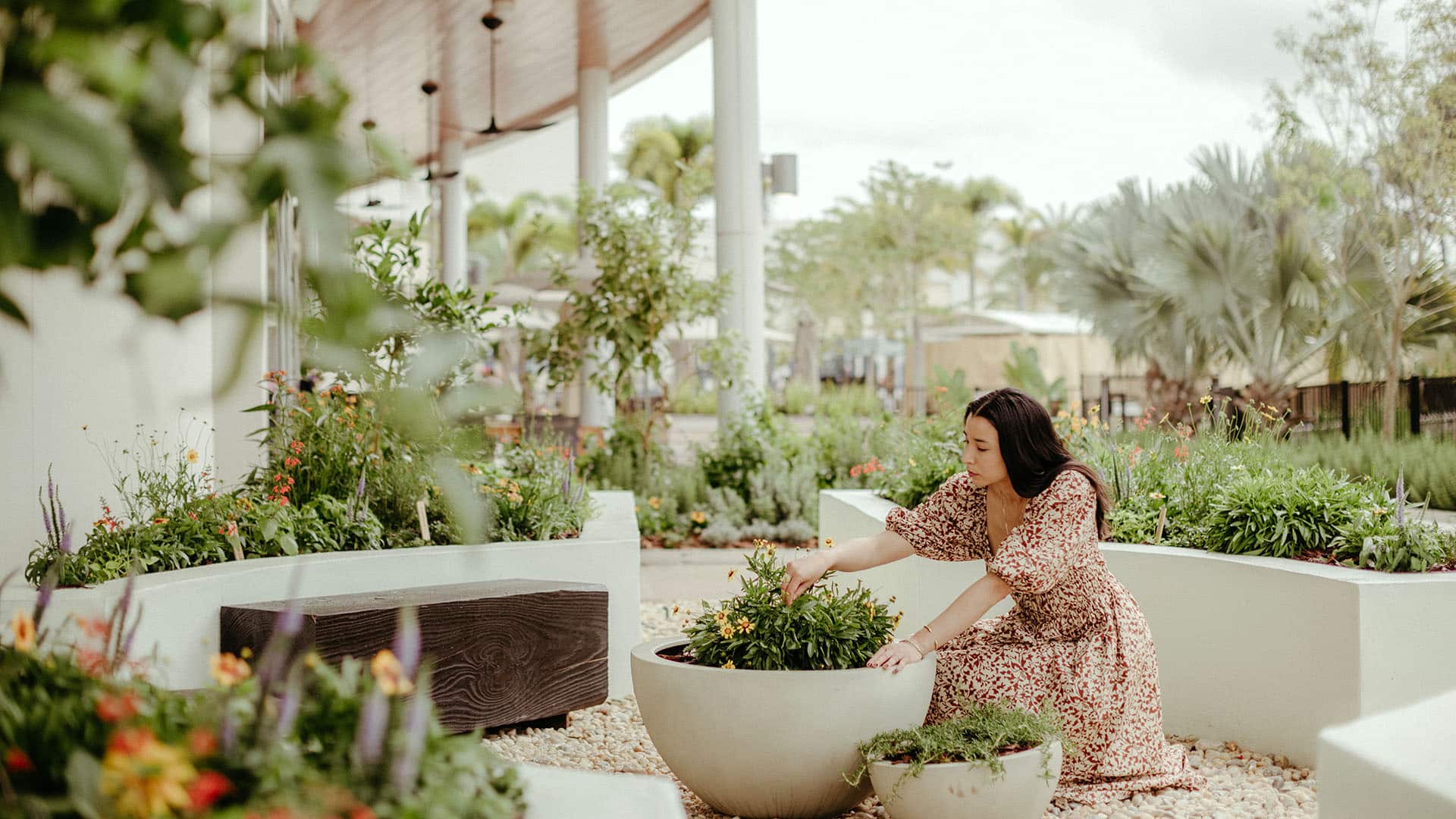
Landscape artist Lily Kwong at the JW Marriott Orlando Bonnet Creek. (All Photos: Marriott International)
Travel by DesignThe Art of Garden Design: How These Beautiful Hotel Gardens Promote Mindfulness
By Lia PicardWhen landscape artist Lily Kwong needs to feel grounded, she heads to a garden.
“It’s something that I try and do when I travel,” says Kwong. “Our bodies get put through so much stress — from getting off planes and into cars to switching time zones — that it’s important to find ‘moments of mindfulness.’”
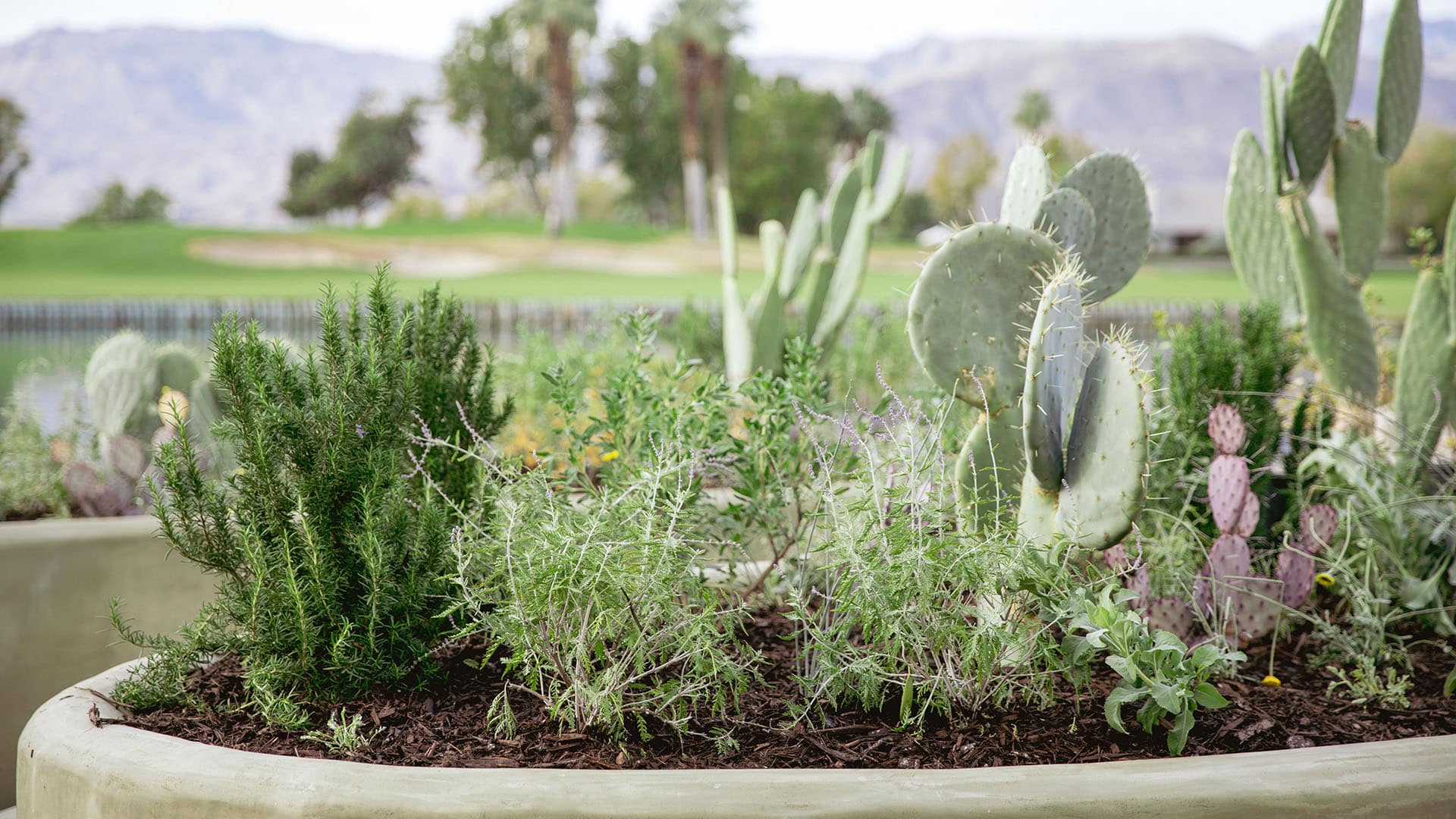
Seeking out the serenity of a garden, you allow yourself to feel the change in the environment so that you, the traveler, feel rooted rather than overwhelmed or overstimulated.
“You just have a totally different experience of your adventure, and the journey becomes much more impactful,” Kwong says.
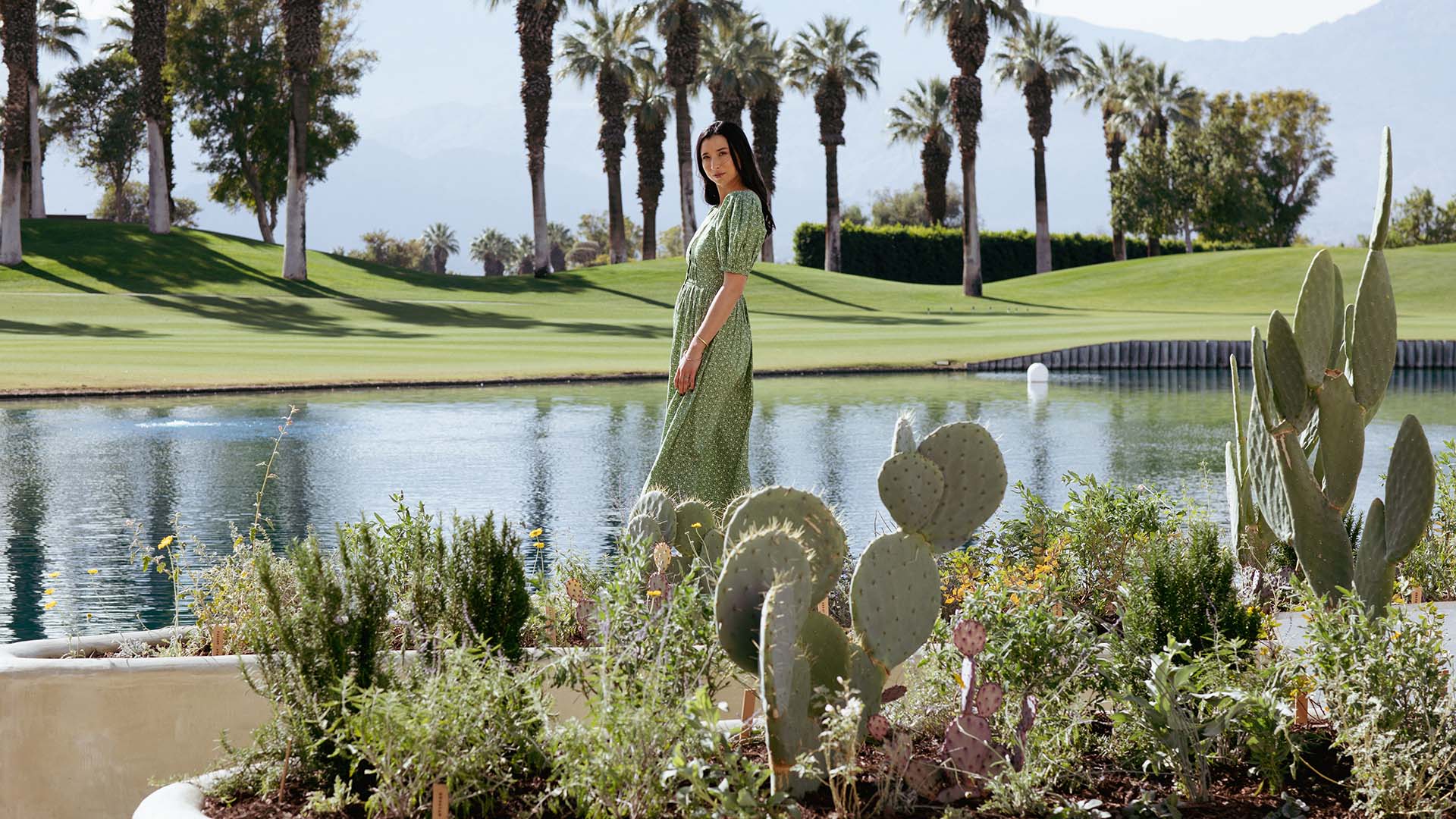
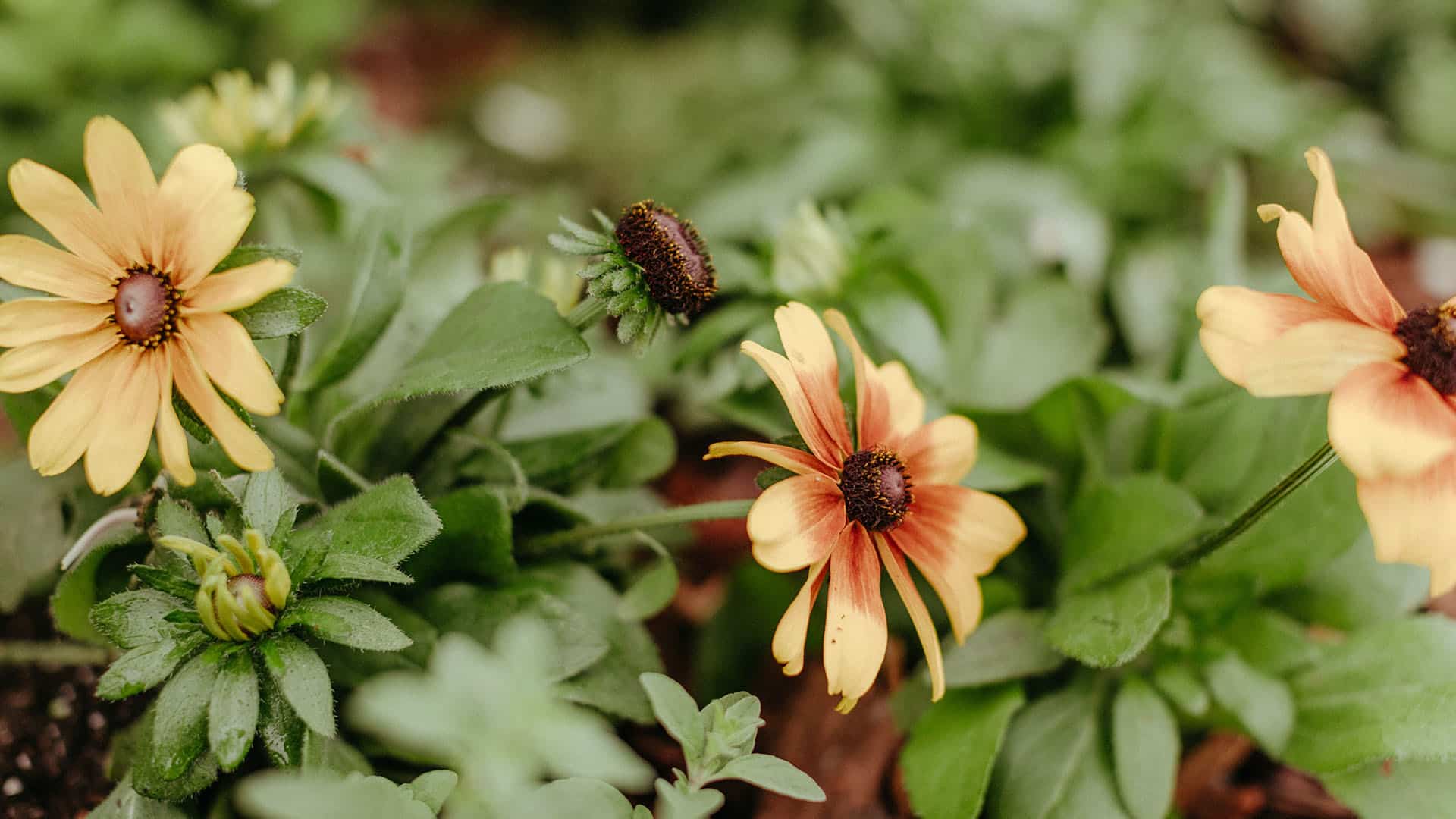
As founder of Studio Lily Kwong, she has designed botanical installations around the world, from the High Line and Grand Central Station in New York to night markets in Taipei. Now, her recent collaboration with three JW Marriott hotels brings her vision directly to hotel guests and visitors.
Each garden she designed for the brand is as unique as the setting itself.At JW Marriott Desert Springs Resort & Spa, for example, Kwong drew inspiration from the arid yet diverse landscape. “I think desert plants embody resiliency, adaptation and kind of strength,” says Kwong. “So we worked with … plants that are adapted to survive severe climate conditions, and many species have potent healing properties.”
In the art deco lobby of the JW Marriott Essex House New York, the garden is found in a wooden cabinet made by Limen Studio in the shou sugi ban style. This Japanese method preserves wood by drying the surface with a hot flame — a sustainable alternative to sealants that also makes the large-scale terrarium look like an art piece.
The garden at JW Marriott Orlando Bonnet Creek Resort & Spa highlights five citrus plants and kitchen herbs with shou sugi ban benches that serve as centerpieces and create mindfulness opportunities within the garden.
Below, Kwong shares her perspective on gardens as oases of wellbeing and how she creates a local sense of place in her garden designs.
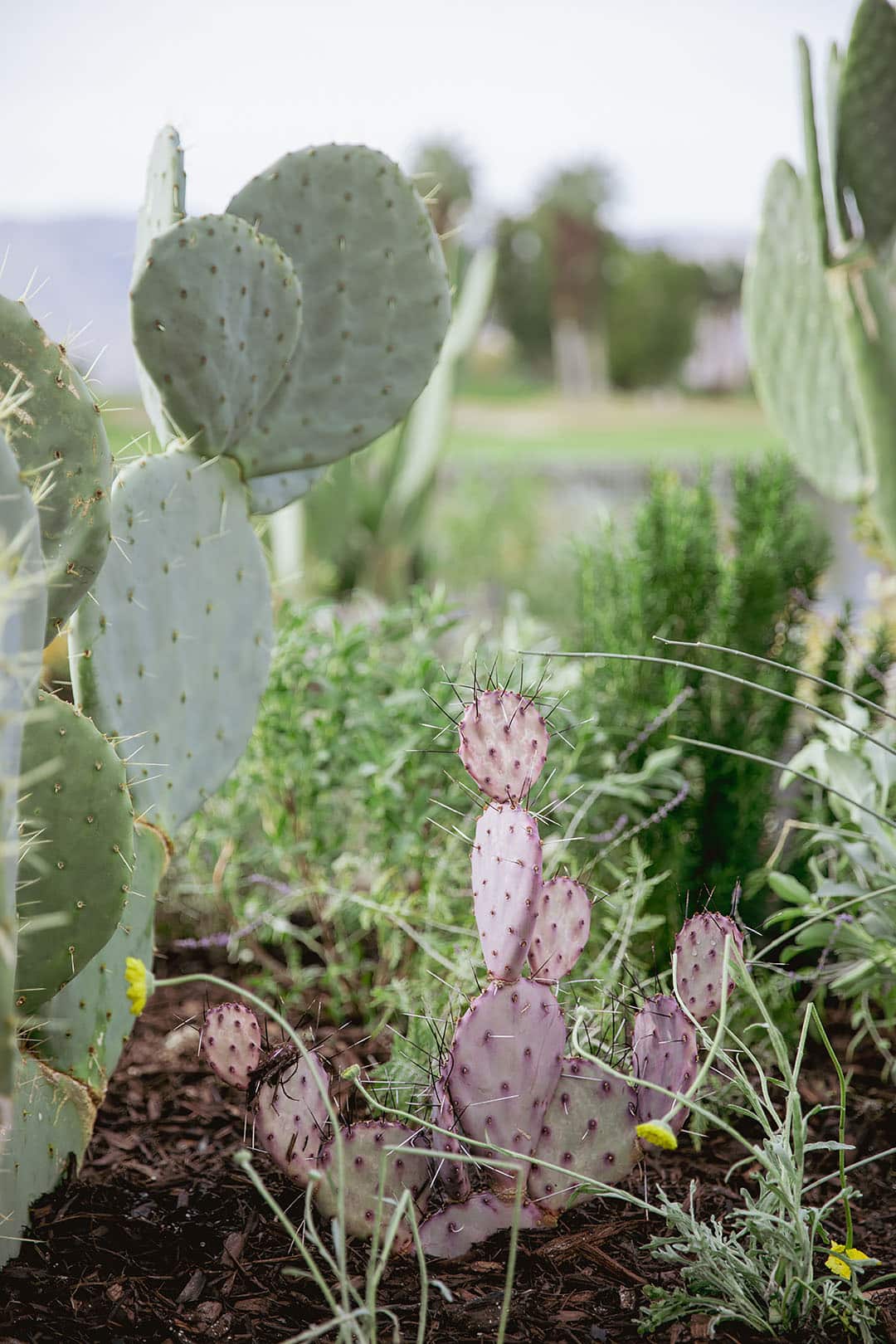
Gardens and Well-Being
“There are tons of links between plants and gardens and mental and physical well-being. Green spaces are so important for mental health.
Studies have shown that green spaces can reduce health inequalities, and can aid in the treatment of illnesses from stress to asthma. They help remedy mild depression and reduce physiological stress indicators.
So, the more green, the more well-being.”
Linking Community Well-Being and Garden Design
“There are studies that show that community gardens and urban parks are these incredible civic assets that build trust and social capital and increased civic and community engagement.
There was a nonprofit partner at each of these [JW Marriott] locations that supported community garden programs for the surrounding community.
In New York, it was Governors Island Teaching Garden through GrowNYC. In Desert Springs, we worked with the Mojave Desert Land Trust. That’s a very important kind of conservation resource there … so they can propagate more native plants.
In Orlando, JW’s generous donation built two edible school gardens. I do think using [the school gardens] as a kind of a vehicle to support community well-being has been really rewarding.”
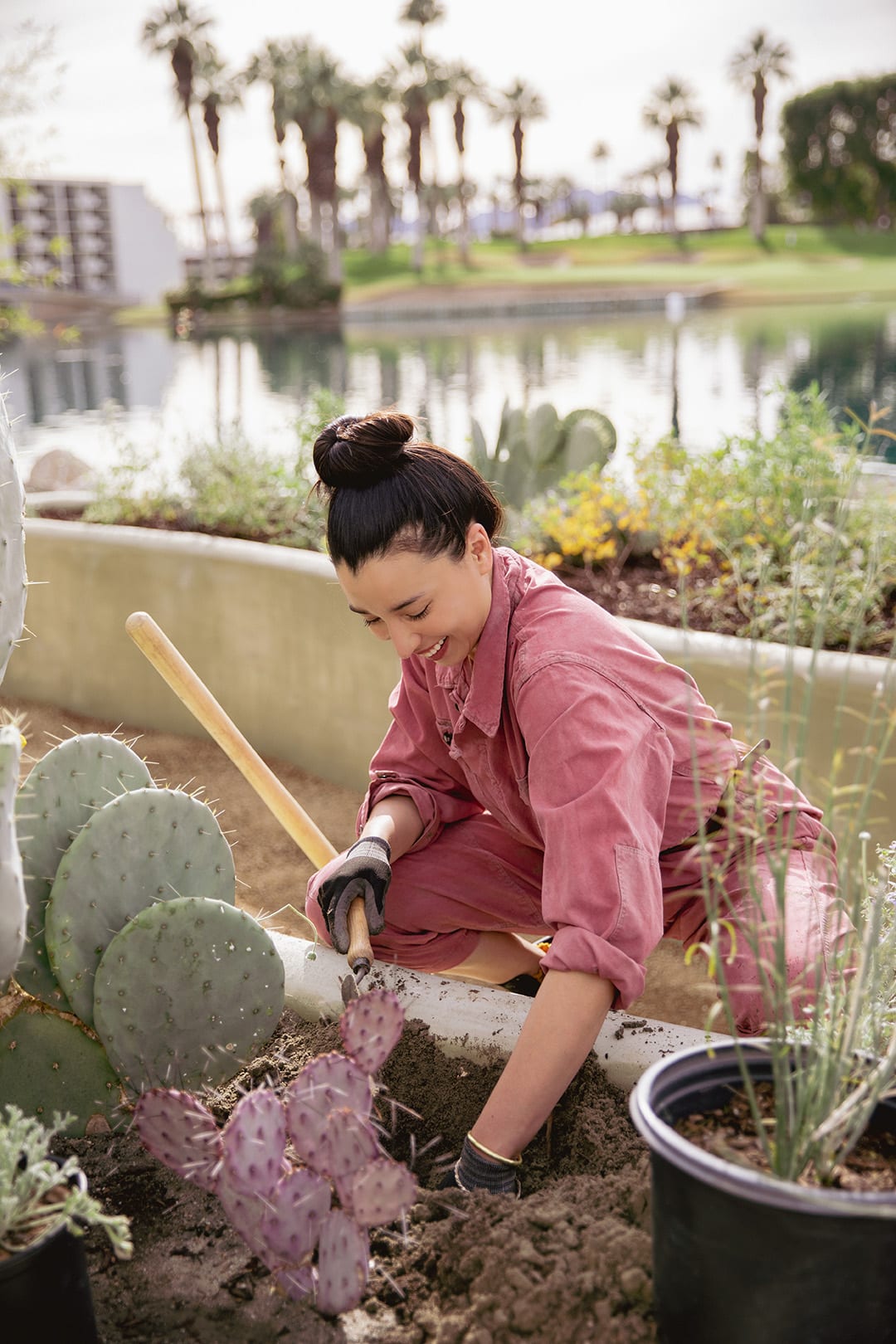
Finding Inspiration for Garden Design
“I studied urban planning, and then my connection to plants has been something that’s been much more intuitive. I really draw inspiration from the surrounding natural ecology. We want these places to feel like they fit
My team goes around and looks at the natural environments, whether it is a community park, a national park or the nursery infrastructure in that area. And we draw from what the environment is already telling us.
And then in terms of figuring out the actual flow and layout of the project, we take into consideration site conditions. We do a robust site analysis of sun shade and water and exposure, but then a lot of it is just walking through the space and feeling how we want to naturally move through it, where we feel comfortable, where we feel like the pathways make sense.
[We looked] at sight lines and visual corridors and [enhanced] those, screening views we don’t want to see. And then, [we drew] from all the visual and energetic information we got from doing the site visits to the surrounding areas.”
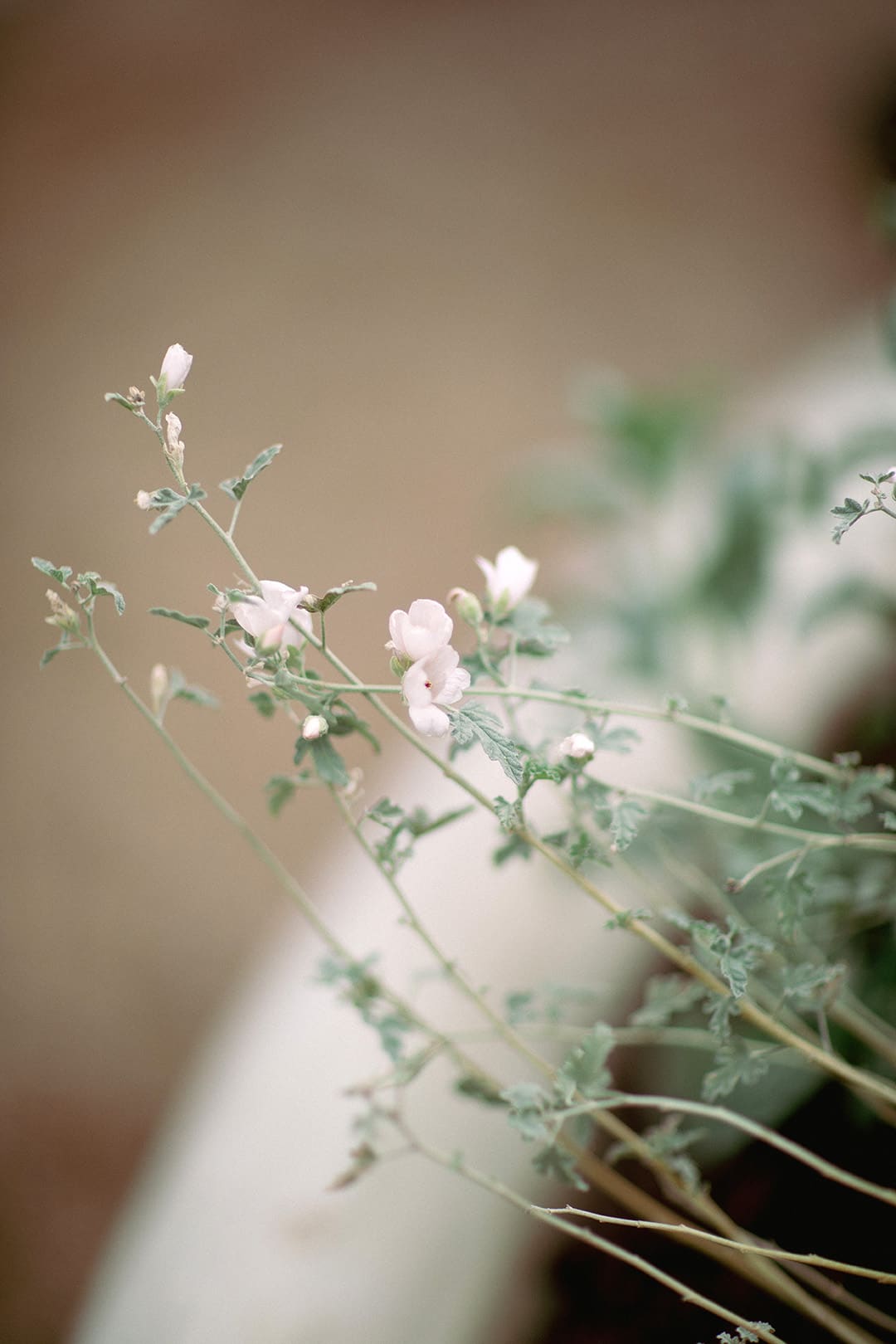
The Importance of Integrating Native Plants
“They support larger ecological systems and attract pollinators and wildlife in the region. They have coevolved with wildlife.
For example, the milkweed that we used in the Desert Springs garden is the only plant that monarch butterflies will lay their eggs on. With no milkweed, there are no monarch butterflies.
And there are so many synergies throughout the food chain in the ecosystem. So by planting native plants, you’re not just planting for beauty and for human beings, you’re planting for insects, birds, pollinators and wildlife that rely on them to survive and thrive.”
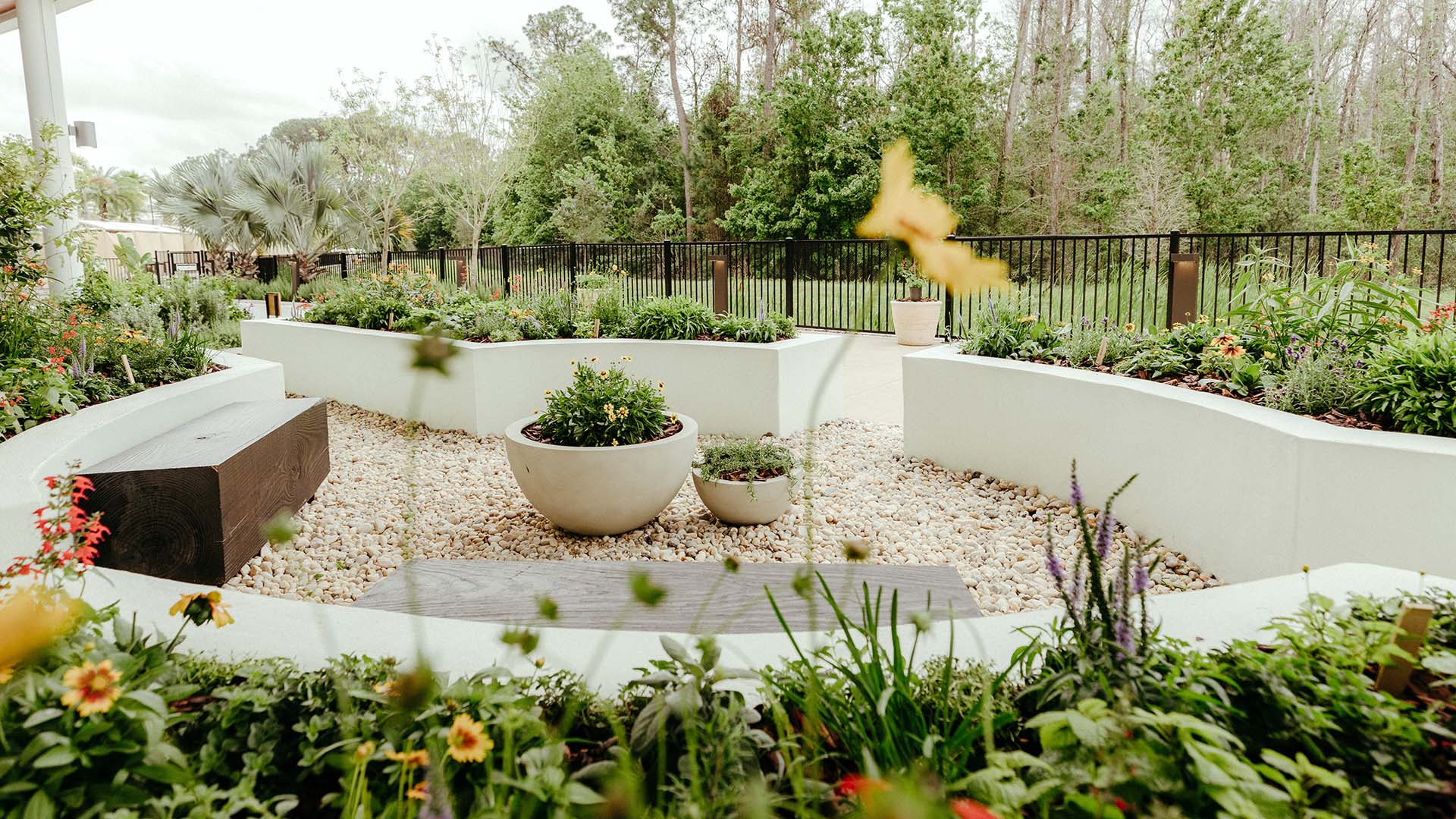
Engaging with Gardens
“As someone who also travels a lot, getting to your destination can sometimes be draining or stressful, and then you arrive and see this garden that is really inviting, and supportive. There are places to sit; you get your whole system activated between the smells and the colors and the textures.
I hope it just helps people feel a sense of place — feel a sense of calm, respite, quiet and peace. Even if it’s momentary, I find that those are things that people carry throughout their trip and their experience.”
Find more inspiration with Travel by Design.





